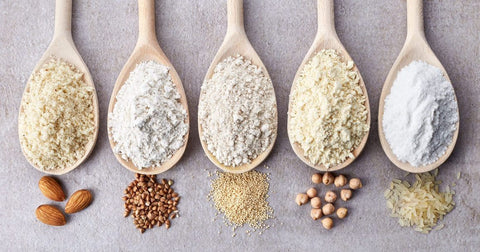Cooking is a realm where magic happens at the intersection of precision and creativity. Mastery of kitchen equivalents is a fundamental skill for every chef, whether amateur or professional. Going beyond merely following recipes, this skill provides valuable flexibility to create delicious and personalized dishes. In this article, we will delve deep into the world of kitchen equivalents, highlighting a key aspect: the conversion of 200 grams to cups.
The Importance of Kitchen Equivalents
Foundations of Cooking
The precision of measurements forms the foundation of any successful kitchen endeavor. Whether meticulously following a recipe or improvising with ingredients, the accuracy of proportions is crucial. Mastery of kitchen equivalents provides a solid base, allowing the cook to express creativity while ensuring flavor consistency.
A World of Possibilities
Mastery of equivalents goes beyond basic conversions. It's a skill that grants the cook the freedom to adapt recipes, substitute ingredients, and explore new culinary paths. At the core of this versatility is the conversion of 200 grams to cups, a frequently used equivalence in everyday cooking.
The Conversion of 200g to Cup: A Crucial Point
Importance of this Conversion
The conversion of 200 grams to a cup holds particular significance in many recipes. Whether working with flour, sugar, or other powdered ingredients, this conversion offers essential flexibility. It allows for adjusting quantities based on individual preferences, desired texture variations, or even the peculiarities of your kitchen equipment.
Practical Tips for the Conversion of 200g to Cup
- Use a Precise Kitchen Scale
- Invest in a high-quality kitchen scale. For the accurate conversion of 200 grams to a cup, a reliable scale is indispensable. Choose a model with clear features and various units of measurement.
- Understand Ingredient Density
- The conversion of 200 grams to a cup can vary depending on ingredient density. Understand that some ingredients, like flour, may be more compact than others, such as sugar. Familiarize yourself with the density of commonly used ingredients for precise adjustments.
- Refer to Conversion Tables
- Keep conversion tables handy. These practical references will guide you not only in converting 200 grams to a cup but also in other commonly used equivalents in cooking. Having this information at your fingertips simplifies the creative process in the kitchen.
Cooking as an Artistic Workshop
Experiment and Unleash Your Creativity
Mastery of kitchen equivalents transforms your kitchen into an ever-evolving artistic workshop. With the conversion of 200 grams to a cup at your disposal, experiment with confidence. Whether adapting a classic recipe, creating your own, or simply adjusting proportions to satisfy your preferences, every culinary experience becomes an adventure.
Substitutions and Adjustments
Knowledge of kitchen equivalents also opens the door to substitutions. If a recipe calls for 200 grams of an ingredient you don't have, the conversion of 200 grams to a cup can allow you to substitute it with another ingredient of similar density.
A Journey into the Conversion of 200g to Cup
Practical Cases: Flour, Sugar, and More
- Flour
- Imagine your recipe calls for 200 grams of flour. Consulting your conversion table, you find this is approximately equal to 1.6 cups. Depending on the desired texture, you might round it to 1.5 cups for a slightly less dense result.
- Sugar
- If the recipe requires 200 grams of sugar, the conversion indicates this is about 1 cup. However, if you prefer a slightly less sweet version, adjust to 3/4 cup.
- Cocoa Powder
- For an ingredient like cocoa powder, 200 grams would generally translate to about 1.5 cups. This gives you the leeway to adjust the richness of your recipe.
Conclusion: Cooking as an Evolving Work of Art
Mastering kitchen equivalents, especially the conversion of 200 grams to a cup, transforms cooking into a constantly evolving artistic experience. Each measurement becomes a note in a personal culinary symphony. As you refine this skill, your kitchen becomes a place where precision and creativity dance in harmony.
Pushing the Boundaries of Culinary Creativity
In conclusion, mastering kitchen equivalents is not just a technical skill; it's an invitation to push the boundaries of culinary creativity. The conversion of 200 grams to a cup becomes a blank canvas where you can paint your own flavors and textures.
So, whether your kitchen is a gustatory adventure where precision and creativity coexist, where each measurement brings you closer to culinary perfection, mastering kitchen equivalents is more than a skill; it's the art of creating delightful moments with every bite. May each dish be a celebration of your creativity and mastery of kitchen equivalents.


